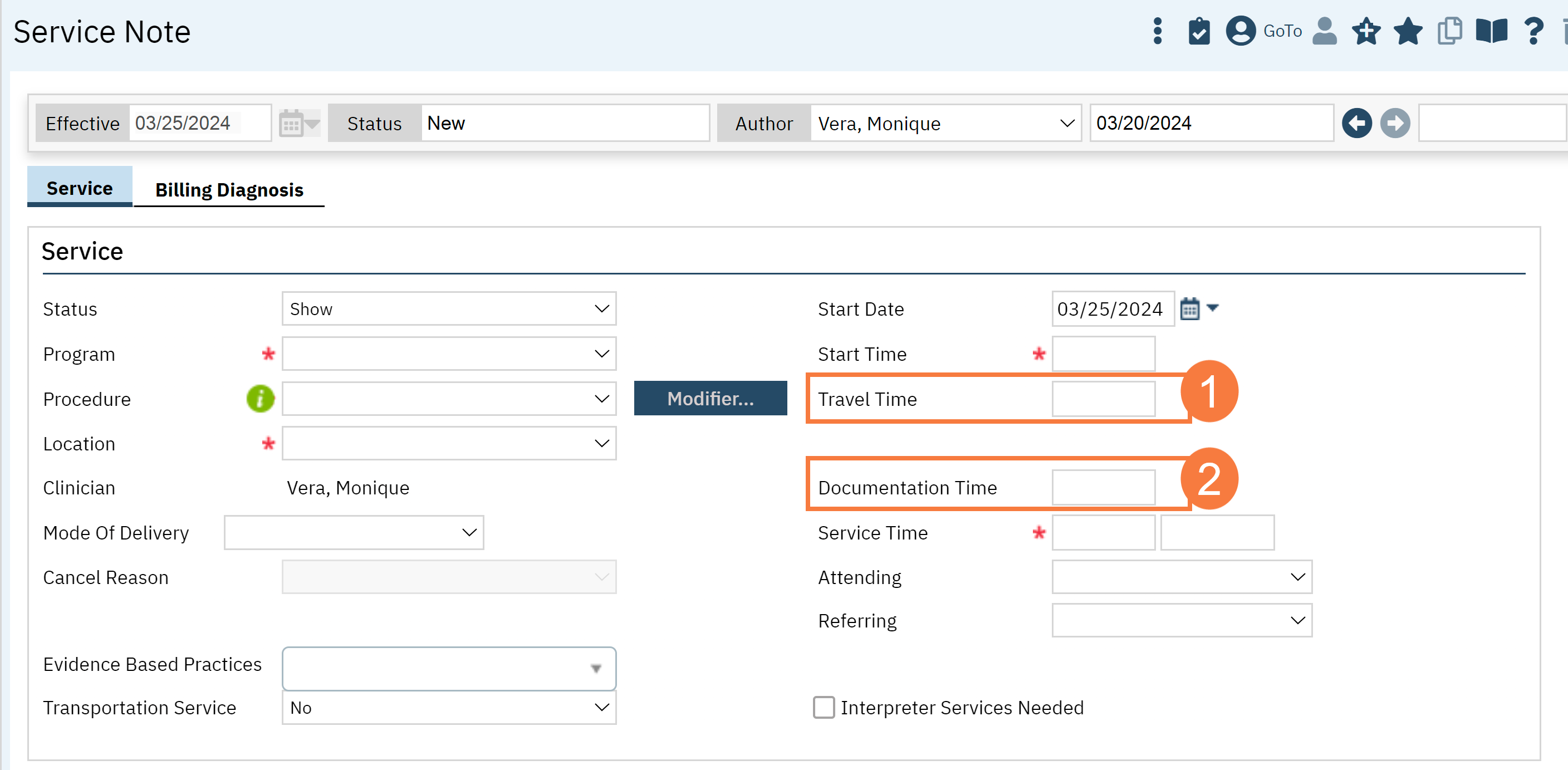Although time spent completing travel and documentation are no longer components of billable time, it is crucial to future rate-setting efforts to include this information on every progress note.
Travel Time
Travel time is considered the time spent traveling from a provider site to an off-site location(s) where Medi-Cal SMHS or DMC, DMC-ODS services are delivered. Any time spent traveling with the client while providing services such as therapy or rehabilitation should be counted as service time. Any time spent solely transporting the client should be documented as transportation and not included as travel time.
When traveling to multiple off-site locations, the provider should account for the time spent traveling from point A to point B. Do not account for the entire travel time for both clients to one client. For example:
Provider travels from office to Client A’s home. Account the travel time from office to Client A’s home as travel time for Client A’s service.
Provider travels from Client A’s home to Client B’s home. Account for time from Client A’s home to Client B’s home as travel time for Client B’s service.
Provider travels back to the office. Account for time from Client B’s home to office as travel time for Client B’s service.
If you travel directly from your home to see a client, use your best judgement on whether to capture travel time. Some agencies may require that you arrive at the office first. Follow your agency’s policy on this. If your agency allows you to travel directly from your home to a client’s location, use your best judgement on what constitutes travel time and what constitutes commuting time.
Scenario 1: A provider lives 5 minutes from the client’s location and 30 minutes from the office. The provider chooses to drive directly to the client’s location, as this feels less wasteful. They consider this travel time, since they’re going to a client’s home.
Scenario 2: A provider lives 30 minutes from town. Both the client and the office are in this town. The provider chooses to drive directly to the client’s location. They do not consider this travel time, because even though they’re going to a client’s home, they’d have to make the trip anyway for their morning commute.
- When multiple providers travel to an off-site location to provide a service for a client, each provider can account for the travel time.
- When traveling to a location where there are multiple clients, the travel time should be divided equally among the clients.
- Scenario: A provider travels to a school and sees 5 clients for individual sessions before driving back to the office. The total time spent traveling is 30 minutes. Each client’s service therefore includes 6 minutes of travel time (30 total travel time ÷ 5 clients = 6 minutes per client)
Travel time should be accounted for when a provider travels between provider sites to provide a service.
Scenario: A provider starts their day at the North County Clinic. After lunch, they travel to the South County Clinic to see a few clients. They should capture the time spent traveling from one clinic to another as travel time.
Documentation:
Documentation time should reflect the amount of time it took the provider to complete the progress note or time completing non-billable documentation.
To track your travel time in SmartCare:
- Enter the total number of minutes in the Travel Time box on the Service tab of the Service/Note
To track documentation time:
- Enter the total number of minutes in the Documentation Time box on the Service tab of the Service/Note.

